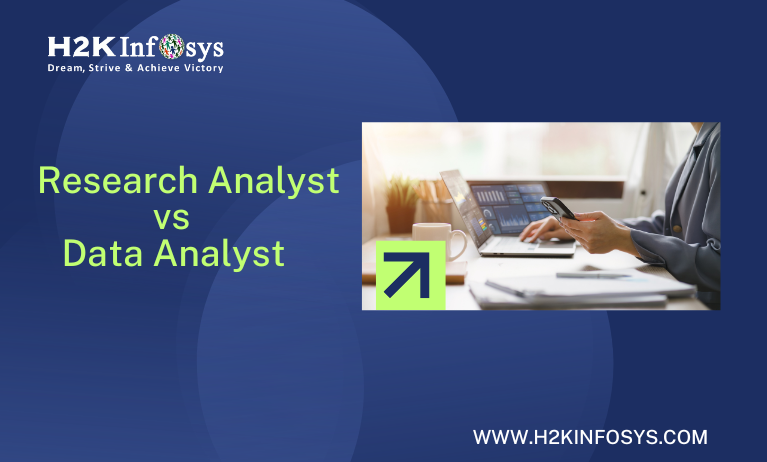In the evolving digital world, businesses are constantly searching for ways to accelerate innovation while reducing costs. Low-code and no-code development platforms are emerging as powerful tools to achieve these goals. By enabling users to create applications without extensive coding knowledge, these platforms are democratizing technology and putting development power in the hands of more people. Platforms like Salesforce Lightning and Salesforce Flow Builder exemplify how low-code/no-code solutions are driving this change, allowing even non-technical employees to create and deploy applications that solve complex business problems.
What Are Low-Code and No-Code Platforms?
Low-code and no-code platforms empower users to build applications with minimal or no coding by offering visual development environments. Instead of writing lines of code, users can drag and drop components to design applications and workflows. This ease of use allows non-developers — often called “citizen developers” — to participate in application development, reducing the burden on IT departments and accelerating the innovation process.
Key Differences Between Low-Code and No-Code Platforms
- Low-Code Platforms: These platforms allow for some customization through coding for more advanced functionalities. Users can develop basic applications visually but still have the option to modify them through code, providing flexibility for more complex solutions.
- No-Code Platforms: These platforms are designed to be entirely free of coding. Non-technical users can create apps using a fully visual interface, allowing businesses to innovate faster without the need for developers.
Salesforce Lightning and Flow Builder are prime examples of this trend, making it easy for businesses to streamline processes, automate workflows, and build custom applications without relying on traditional coding methods.
The Benefits of Low-Code/No-Code Development Platforms
Wider Accessibility and Democratization of Innovation
Traditional application development requires specialized technical knowledge, often leading to bottlenecks in IT departments. However, low-code and no-code platforms enable non-developers to engage in the development process. This accessibility empowers individuals across various departments—marketing, sales, HR—to create and deploy applications tailored to their specific needs without waiting on IT.
For instance, a sales manager can create an app to automate lead management, while a marketing executive can design workflows for campaign automation. Salesforce Lightning excels in making development accessible to users at all skill levels, providing a library of pre-built components that can be assembled into applications. Similarly, Flow Builder allows users to automate workflows visually, enabling automation experts and process managers to create sophisticated workflows without touching a single line of code.
Rapid Application Development and Deployment
One of the biggest advantages of low-code/no-code platforms is the speed at which applications can be developed and deployed. By simplifying the development process and eliminating the need for extensive coding, businesses can quickly build prototypes, iterate on designs, and launch new solutions. This reduces the typical time-to-market for applications from months or weeks to just days. Salesforce Lightning and Flow Builder enable organizations to streamline their development cycles. Salesforce’s drag-and-drop interface allows users to build and test apps faster than ever before, helping companies stay agile and responsive in a competitive environment.
Cost Efficiency and Reduced Development Costs
Traditional software development requires hiring skilled developers, which can be costly and time-consuming. Low-code/no-code platforms drastically cut these costs by empowering in-house teams to develop applications themselves, reducing the need for external resources. Furthermore, businesses can avoid the delays and expenses associated with lengthy development cycles. This is particularly beneficial for organizations investing in SFDC Salesforce Certification programs or Salesforce training and placement, as it allows teams to leverage internal talent for development.
According to industry insights, low-code and no-code solutions like Salesforce Lightning have made it easier for small and medium-sized enterprises (SMEs) to access powerful application development tools without the hefty price tag of traditional development. This allows businesses of all sizes to innovate and compete more effectively.
Empowerment of Citizen Developers
The rise of “citizen developers” is one of the most significant shifts in modern application development. Citizen developers are non-technical professionals who, through low-code/no-code platforms, can create apps and automate processes that improve their work. This helps decentralize innovation and allows organizations to tap into a broader pool of talent.
Salesforce has fully embraced this movement, with Flow Builder designed for users who want to automate complex business processes without coding. Users can easily configure approvals, notifications, and multi-step workflows by simply selecting options from a visual interface. Additionally, those who undergo Salesforce training and placement programs can quickly transition into roles that leverage these tools effectively.
Increased Scalability and Flexibility
Low-code/no-code platforms are not just limited to small-scale applications. As these platforms mature, they are capable of supporting highly complex and scalable applications that grow with the business. For example, Salesforce Lightning allows businesses to customize applications as they grow, ensuring that the solution evolves in step with the company’s needs. Similarly, Salesforce Flow Builder provides flexibility in workflow automation, allowing businesses to automate processes across departments and manage growing operational complexity.
Salesforce Lightning and Flow Builder: Game Changers in the Low-Code/No-Code Landscape
Salesforce Lightning
Salesforce Lightning is a platform that enhances the user experience by providing a component-based framework for app development. It empowers users to create applications with minimal effort by using pre-built components such as dashboards, forms, and data visualizations. Salesforce Lightning allows for customization, ensuring that applications align with a company’s specific workflows.
Key Features:
- Component-Based Design: Build and customize applications by selecting components from a library of pre-built modules.
- Drag-and-Drop Interface: Users can easily assemble their applications by dragging and dropping elements, with no coding required.
- Mobile-Ready: Applications built with Salesforce Lightning are mobile-optimized, ensuring a seamless experience across devices.
Salesforce Flow Builder
Flow Builder is a robust tool that allows businesses to automate complex workflows using a simple, visual interface. It is particularly useful for creating automation that spans multiple departments and involves various data sources.
Key Features:
- Visual Workflow Automation: Design sophisticated workflows using a drag-and-drop interface.
- Pre-Built Templates: Flow Builder comes with pre-built templates to accelerate the creation of common business processes, reducing the time needed for setup.
- Integration Capabilities: Easily integrate Salesforce Flow Builder with external systems, ensuring smooth data exchange across platforms.
The Broader Impact of Low-Code/No-Code Platforms
The rise of low-code and no-code platforms is transforming industries across the board. From healthcare to finance and retail, businesses are leveraging these platforms to innovate faster and more efficiently. These solutions allow companies to tailor their applications to specific industry requirements without the overhead of traditional development methods.
In addition to their impact on application development, these platforms are driving a broader cultural shift within organizations. Employees who were once limited to using pre-built applications can now create solutions specific to their needs, fostering a culture of innovation and continuous improvement.
The Future of Low-Code/No-Code Development
Looking ahead, low-code and no-code platforms will continue to play a pivotal role in the future of software development. Key trends expected to shape the industry include:
- Greater Integration with AI: AI-powered features, such as Salesforce’s Einstein AI, will further enhance the capabilities of low-code/no-code platforms, enabling more advanced automation and data-driven decision-making.
- Expansion Across Industries: As more industries adopt these platforms, expect to see even more specialized tools and templates designed for specific sectors like healthcare, finance, and manufacturing.
- Focus on Collaboration: Future low-code/no-code platforms will likely focus on enhancing collaboration between IT departments and citizen developers, ensuring that applications are secure, scalable, and fully aligned with business goals.

Conclusion
Low-code/no-code platforms like Salesforce Lightning and Flow Builder are revolutionizing the way organizations approach application development. By lowering the barrier to entry and enabling employees across departments to contribute to innovation, these platforms are fostering a new era of rapid digital transformation. Businesses that embrace these technologies will be better positioned to respond to market changes, improve operational efficiency, and create tailored solutions that meet their unique needs.
Investing in Salesforce admin certification and Salesforce training and placement not only equips individuals with the skills necessary to leverage these tools effectively but also positions them for success in an increasingly competitive marketplace. Low-code/no-code is not just a trend—it is the future of business application development. By harnessing platforms like Salesforce, companies can unlock the full potential of their teams and thrive in today’s dynamic business environment.

























